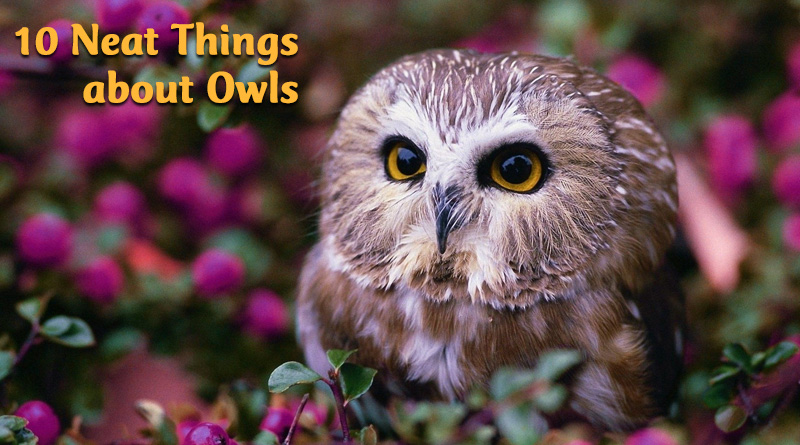About Owls
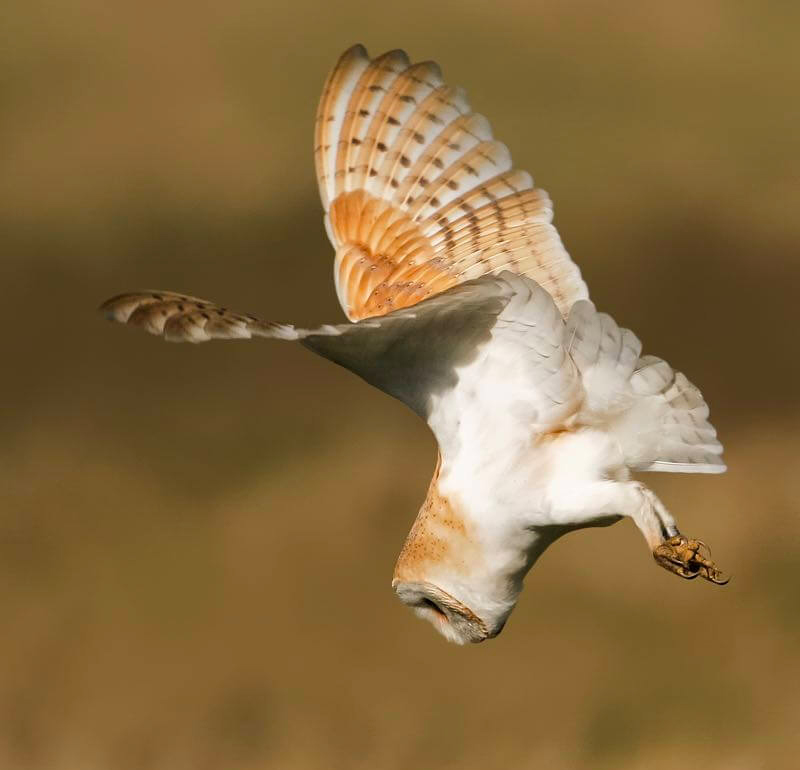
1. Silent flyers.
Owls fly silently owing to the structure of their wings. Serrated edges along the feathers and a velvety coating dampen the sound of their flight. Although they can swoop down and capture unsuspecting prey, these adaptations make their feathers less waterproof, which can become a deadly problem during rainy periods.
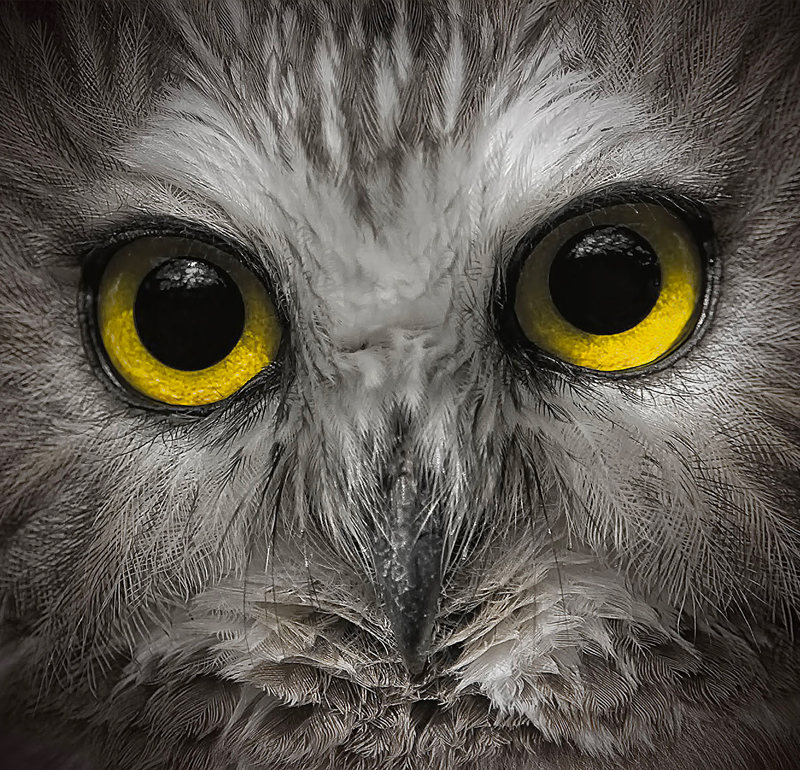
2. The better to see you with my dear.
Owls’ eyesight is very acute, specially designed to serve their feeding habit needs. They are long-sighted, finding it harder to see up close, although they do have binocular vision, making them able to see in three dimensions, and they can see some colour. Eyes are very large; snowy owl eyes are as heavy as our own. An owl can turn its head 270 degrees, that is three-quarters of the way around, so it can see side to side, forwards and even backwards. It has three sets of eyelids: one to clean the eye, one to sleep with and one to blink with.
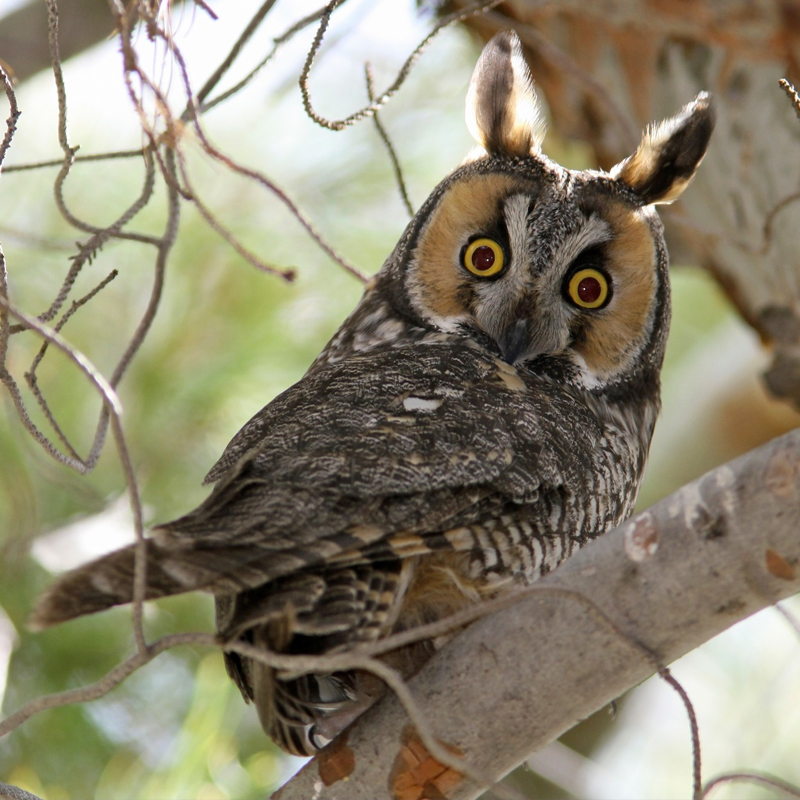
3. Owls have good ears.
Owls can hear mice from 60 feet away and it is said that the barn owl has a hearing range of 150 feet. In some cases the ears, set behind the eyes in the side of the head, are placed asymmetrically. If sound enters the right ear, the owl can detect where it’s coming from by the length of time it takes to get to the other ear. By moving its head, it can zero in on the exact location.
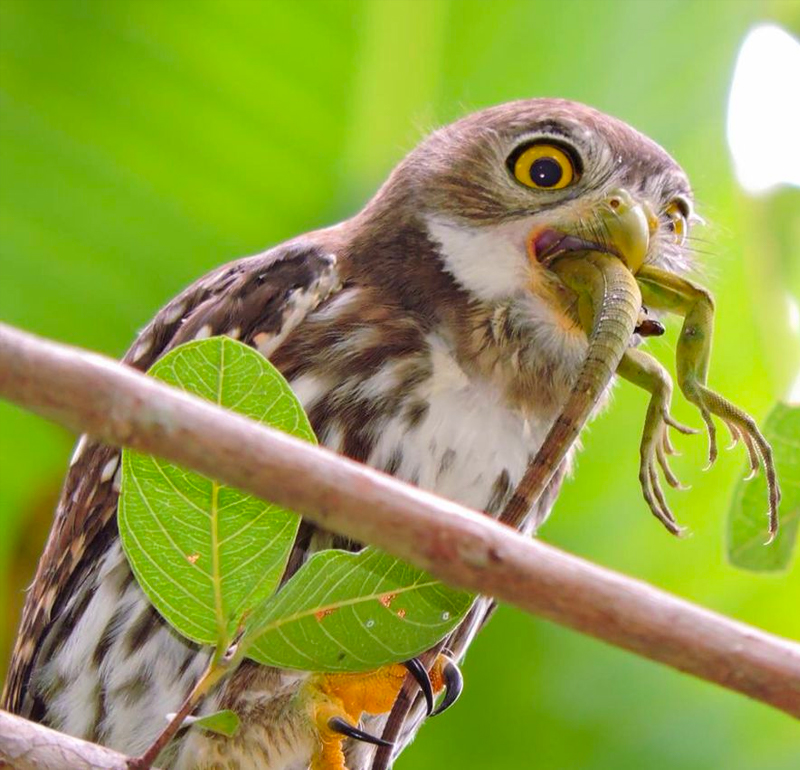
4. One gulp wonder.
An owl swallows its food whole, regurgitating bones and fur and other indigestibles in pellets. Owls also have very interesting feet, with two toes facing forward and two facing backward, which give it a lot of dexterity in catching prey. If you want to find an owl, look for a perch, perhaps a fence post, and pellets on the ground at the base.
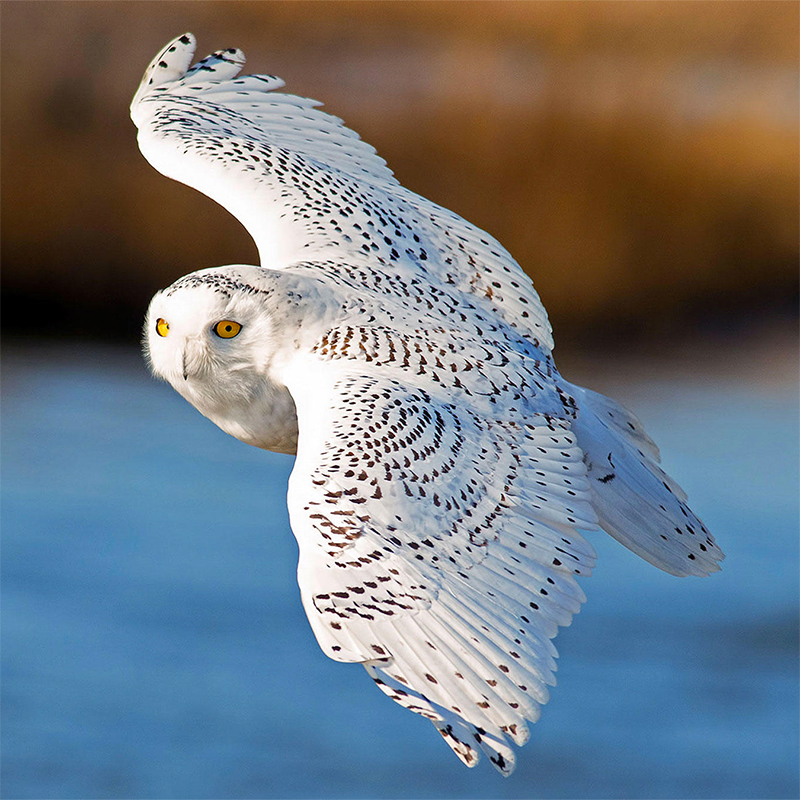
5. Visitor from the tundra.
The snowy owl could also be called the showy owl with its white feathers and black bars. A large owl, with a wingspan of over 52 inches, it weighs about four to five pounds (the female is heavier) and is the heaviest owl in Canada. It nests in a hollowed out depression lined with feathers in the ground. In the high Arctic, it feeds on lemmings or even the odd hare. It winters down south in the wide-open spaces of the Prairies and most of Canada, northern Europe and northern Asia.

6. Squatters.
No owls build nests, although some lay their eggs in a hollow. Instead, most look for a nest abandoned by some other bird, fitting the size of the nest to the size of the squatter owl.
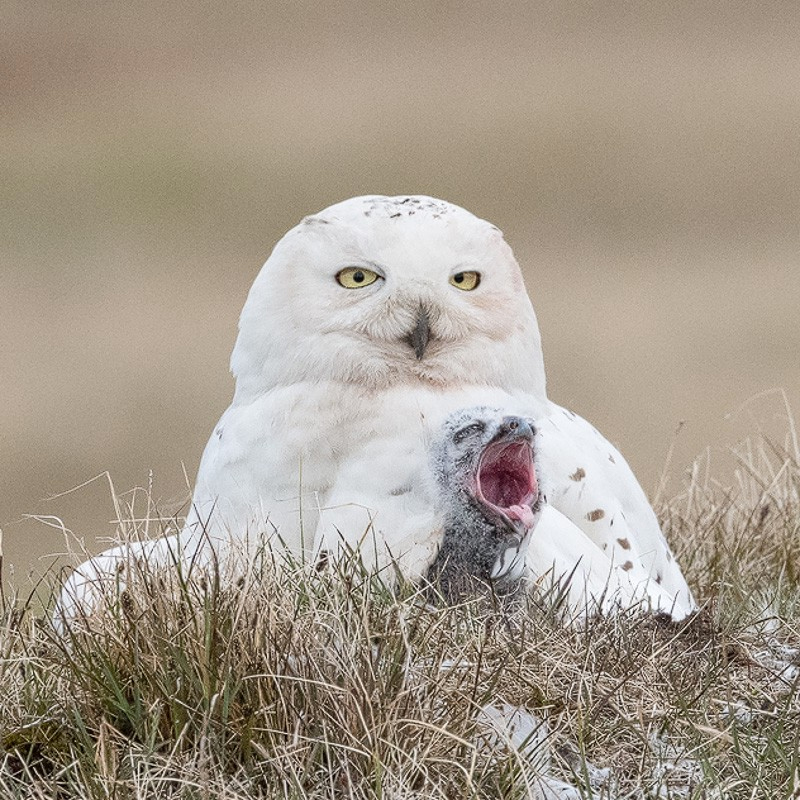
7. To the manor born (or is it manner?).
The first bird out of the owl eggshell is heir to all in difficult times. The first born gets the first food, all the food if it’s a bad year, and even its siblings when things are really tough. Snowy owls depend on lemmings and when that population dwindles, egg clutches will shrink from 10 to 12 down to four to seven.
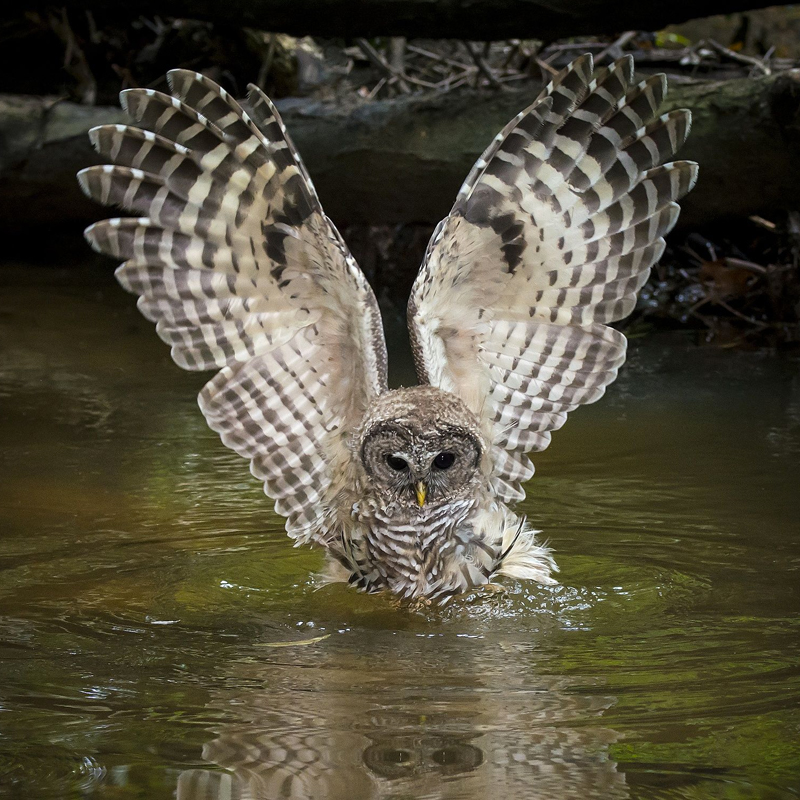
8. Let’s go fishing.
While most owls feed on rodents, the hoot owl (also called the barred owl) the one that goes “hoo-hoo-hoo”, is said to be able to wade in water to find fish. Whether or not that’s true, Mr. and Mrs. owl do enjoy a good bath now and then, even in winter. Mr. is a real “hoot” in that he helps Mrs. with the brooding chores. Most male owls simply feed the female while she spends long, dreary days in the nest.

9. Provincial owls.
Manitoba, Alberta and Quebec all claim owls as their provincial bird. In Manitoba, it’s the great grey owl, one of Canada’s largest owls at 2.4 pounds, a 52-inch wingspan and 17 to 24 inches in height. The provincial bird of Alberta is the great horned owl which is known to eat snowshoe hares. Quebec claims the snowy owl.

10. Tiny owls.
Lest you think owls are big, bold and brassy, think again. Two very small owls inhabit our northland. The northern pygmy owl is just seven to eight inches long and weighs only 2.5 ounces, with a wingspan of only 12 inches. The northern saw-whet owl is also very small with a wingspan of 17 inches and a weight of just 2.8 ounces. It can live up to 17 years.
– Dorothy Dobbie Copyright©
Pegasus Publications Inc.

